Mental health is public health
A new center raises the profile of mental health research

Spring 2014
a thirst for safe water and sanitation 8 | melody’s story 16 | why do teens drink too much? 18
Dean, Rollins School of Public Health
James W. Curran, MD, MPH
Associate Dean for Development and External Relations, Rollins School of Public Health
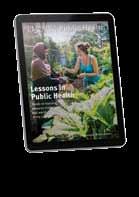
Kathryn H. Graves, MEd, 93MPH
Editor
Pam Auchmutey
Associate Editor
Kay Torrance
Art Director
Peta Westmaas
Director of Photography
Bryan Meltz
Photo Contributors
Thomas Clasen
Kay Hinton
Karen Levy
Melody Moezzi
Paige Rohe/Carter Center
Production Manager
Carol Pinto
Executive Director Health Sciences
Creative Services
Karon Schindler
Associate Vice President Health Sciences
Communications
Vince Dollard
A global need for clean water
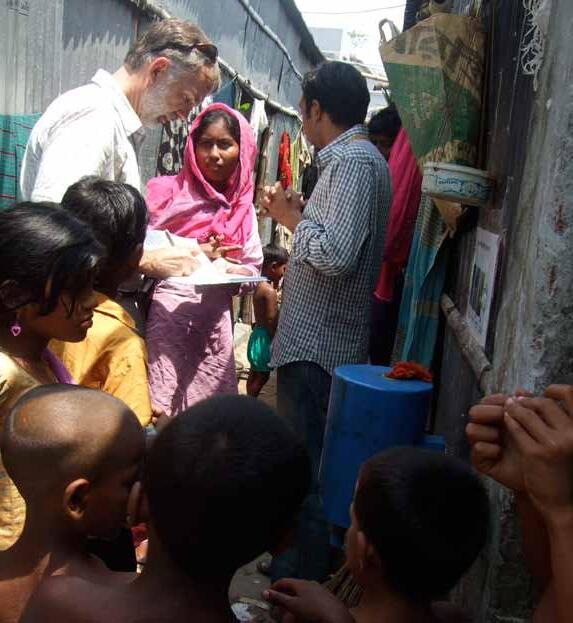
Thomas Clasen (above left) joined Rollins’ Center for Global Safe Water (CGSW) last year as the Rose Salamone Gangarosa Chair in Sanitation and Safe Water. Clasen’s new chair complements the Eugene J. Gangarosa Chair in Safe Water and Sanitation, held by Christine Moe, director of the CGSW. Both chairs are funded by endowments created by Rose and Eugene Gangarosa, a founding father of the RSPH and an expert in enteric disease prevention. “Rollins is one of the few schools of public health that has made a genuine commitment in the area of water and sanitation,” Clasen says. Read more about him on page 8.
Emory Public Health is published by the Rollins School of Public Health, a component of the Woodruff Health Sciences Center of Emory University (emoryhealthsciences.org). Please send class notes, observations, letters to the editor, and other correspondence to Editor, Emory Public Health, 1762 Clifton Road, Suite 1000, Atlanta, GA 30322, call 404-712-9265, or email pam.auchmutey@emory.edu. To contact the Office of Development and External Relations, call Kathryn Graves at 404-727-3352 or email kgraves@emory.edu. Visit the Rollins School of Public Health website at sph.emory.edu. To view past issues of the magazine, visit publichealthmagazine.emory.edu.
13-RSPH-DEV-016
The iPad edition of Emory Public Health is available by downloading Emory Health Magazines in the App Store.
8


10
16

18

Contents spring 2014 On the cover The cover art is by Christina Dill, a student at the Portfolio Center, an Atlanta art and design school. A reproduction of the original hangs in the Claudia Nance Rollins Building. The illustration was part of a series of mental health posters created by students at the Portfolio Center for Rollins.
A thirst for safe water and sanitation
Clasen joins Rollins and seeks better answers to water and sanitation issues.
Thomas
Mental health takes its place at Rollins
new center raises the profile of research and education to aid a vulnerable segment of the U.S. population.
A
Melody’s story
Rollins alumna writes candidly about her bipolar disorder.
A
Too much, too early
Windle’s research breaks long-held misbeliefs about drinking among the young. in EVER y i SSU E D EA n’ S m ES SAGE ............. 2 i n B R i E f ..................... 3 PH il A n THRO P y .............. 22 C l ASS n OTE S ............... 25 CEO’ S m ESS AGE ............. 28 7 18 16 SPRING 2014 Mental health is public health A new center raises the profile of mental health research a thirst for safe water and sanitation 8 melody’s story 16 why do teens drink too much? 18
Michael
From the Dean
Mental health is public health
In December 2013, U.S. Vice President Joe Biden announced that the Obama Administration would make available $100 million to increase access to mental health services and improve mental health facilities. Specifically, $50 million would go toward community health centers to establish or expand services, and the other $50 million would be earmarked for mental health facilities in rural areas.
The announcement garnered much attention at the time, as the one-year anniversary of the Newtown, Connecticut, school shootings neared, and investigators were set to release their final report on the incident. Unfortunately, the issues surrounding mental health—treatment, access to care, and stigma, among many others—often only receive attention when a tragedy has rattled the national psyche.
James W. Curran, MD, MPH
James W. Curran Dean of Public Health

We have made progress in recent years. Mental disorders are recognized as physical conditions, mental health research is gaining more attention, and perhaps most important, people recognize that mental health is public health. Any mental health issue concerns all of us.
At Rollins, we are leading the call for mental health research and improvements in care. A contingent of researchers is bringing attention to the various areas of mental health—that children with private insurance still cannot access care, why people with mental disorders lack primary care, and how state parity laws affect treatment, for example. What we have found indicates that our nation still has a lot of work to do to bring mental health care in line with the rest of physical health care.
Rollins researchers recently have been brought together under the umbrella of the Center for Behavioral Health Policy Studies, a new initiative led by Benjamin Druss, the Rosalynn Carter Chair in Mental Health. With the new center, Rollins researchers will continue to gain visibility and thus sustain the national dialogue on mental health to ensure that children and adults with diagnosable disorders have access to the services they need.
2
public health magazine spring 2014
New clinical site targets HIV in women
After receiving an NIH grant for $11.9 million, Gina Wingood, professor of behavioral sciences and health education, is co-directing a new clinical research site focused on women and HIV. The locale is part of the Women’s Interagency HIV Cohort Study, which was established in 1993 with locations in the Midwest and on the West and East coasts to study women who are either HIV-infected or at risk for infection. Emory’s site is one of four and the first to be located in the South.
Wingood, the recipient of the Agnes Moore Research in AIDS Endowment, leads the Emory locale with Igho Ofotokun, an infectious disease specialist at Grady Memorial Hospital and a clinician scientist with the Emory Center for AIDS Research (CFAR). The researchers are partnering with SisterLove Inc. and other metro Atlanta-based community organizations to raise awareness about the study.
Emory’s efforts focus on HIV/AIDS secondary prevention for women through immunological, pharmacological, epidemiological, and behavioral research and clinical interventions. Emory and its affiliates care for nearly 8,000 patients with HIV, making for a large pool of potential research participants. According to the CDC, 40% to 50% of people with AIDS in the United States live in the South.
About 40% to 50% of people with AIDS in the United States live in the South, according to the CDC.
Study explores stress, racism connection
African American women who expect racism at the doctor’s office are more likely to have an abnormal thickening of the walls of their heart arteries, according to a Rollins study.

Due to past events, many African Americans expect to incur racism at a doctor’s office and as a result suffer stress because of that expectation, notes Tené Lewis, associate professor of epidemiology, who led the study.
Even if a racist incident does not occur, the body still experiences chronic stress in anticipation. Chronic stress and the thickening of the heart artery walls are common risk factors in cardiovascular disease, she says.
The study involved 54 relatively healthy black women between the ages of 30 and 50 and took into account other risk factors such as blood pressure and obesity.

“Understanding the demographics of the HIV epidemic and formulating prevention and treatment goals in specific areas of the country is critical to improving outcomes and controlling this infection,” says Wingood, who also co-directs the Prevention Science Core for CFAR.
“We’ve learned a lot over the past decade about actual experiences of racism and health, but we don’t know very much about how expectations of racism impact health,” says Lewis. “Our findings are preliminary, but they provide a strong foundation for next steps in furthering our understanding.”
3 spring 2014 public health magazine In Brief
Carlos del Rio
New chair of Behavioral Sciences and Health Education

named
Colleen McBride was named Rollins Professor and chair of the RSPH’s Department of Behavioral Sciences and Health Education, effective July 2014. She comes to Emory from the National Human Genome Research Institute of the National Institutes of Health, where she has served as founding chief and senior investigator of the Social and Behavioral Research Branch. McBride’s research focuses on public health interventions to promote risk-reducing behaviors, specifically using genetic information to motivate healthy behaviors. Genetic information, scientists believe, eventually will allow lifestyle
interventions to be personalized to make compliance with healthy behaviors easier.
McBride held academic positions at the University of Washington as well as Duke University Medical Center, where she served as chief of the Division of Prevention Research in the Department of Community and Family Medicine. At Duke, she was director of the Cancer Prevention and Control Research Program. She also held adjunct faculty appointments in the Gillings School of Global Public Health at the University of North Carolina and the Johns Hopkins Bloomberg School of Public Health.
AIDSVu adds city maps to its online trove
AIDSVu, the most detailed publicly available view of HIV prevalence in the United States, now includes maps for 20 U.S. cities. Launched in 2011, AIDSVu is a compilation of online maps that show the most recent HIV prevalence data at national, state, and local levels and demographics, including age, race, and gender.
The national map, for example, shows significantly higher rates of people living with HIV in the Northeast and the South than in much of the rest of the country. Viewing HIV prevalence by race or ethnicity shows that HIV disproportionately affects black and Hispanic Americans and that these disparities exist in major urban and rural areas.
AIDSVu also includes city snapshots displaying HIV prevalence alongside various social determinants of health, such as poverty, lack of health insurance, and education attainment.
“Knowing the areas most affected by HIV is critical for meeting the goals of the National HIV/AIDS Strategy, which calls for significantly reducing new HIV infections and improving care for people living with HIV,” says Patrick Sul-
livan, professor of epidemiology. Currently, more than 1 million Americans are living with HIV, and an estimated one in five people with HIV do not know their status. Sullivan heads up the site, which features data from the CDC. Financial support for AIDSVu is provided by Gilead Sciences. To learn more, visit aidsvu.org.
Interactive Maps
National, State, and Local Maps
•Persons living with an HIV diagnosis by state, county, ZIP code and census tract

•Social determinants of health (e.g., poverty, lack of health insurance, educational attainment)
•HIV transmission modes
•HIV testing and treatment center locations
•NIH-funded HIV Prevention, Vaccine & Treatment Trials Sites
In Brief 4 public health magazine spring 2014
www.AIDSVu.org
African Americans, religion, and organ donation


African Americans represent 13% of the general population but more than one-third of those with end-stage renal disease. A transplant is most often the recommended treatment, but because of a shortage of organ donations, thousands of people die each year waiting for a transplant. The organ donation rate among African Americans is lower than is needed, and one reason is the perception that donation is contrary to religious beliefs, says Dana Robinson, who directs Rollins’ Project ACTS (About Choice in Transplantation and Sharing).
“African Americans donate organs at rates equal to their representation in the U.S. population and not equal to their representation on the national waiting
list,” says Robinson.
Through a recent study, she and her colleagues, Nancy Thompson and Kimberly Jacob Arriola in Behavioral Sciences and Health Education, found that for African Americans who are Christian, religious norms have the strongest association in donation decision-making.
“The official position of most Christian religions is supportive of organ donation, but there is a disconnect between what is the truth from the perspective of a religious doctrine and what is perceived by parishioners,” says Robinson, noting a perception that donation is contrary to religious beliefs.
The study could offer a new strategy for donation education efforts targeting African American parishioners.
Mis_ing d_ta project receives PCORI funding
RSPH researchers are leading a project to develop methods to account for missing data in large observational studies. The hope is that any proposed methods will enable investigators to obtain robust and valid results on patient outcomes while educating them on the application of statistical methods for missing data, says project leader Qi Long, associate professor of biostatistics and bioinformatics.
The project is funded by a grant from PCORI—the Patient-Centered Outcomes Research Institute—and inspired by the Paul Coverdell Na-
tional Acute Stroke Registry.
“Missing data can seriously compromise statistical analysis and the validity of findings,” says Long. “Existing methods likely lead to biased results that could produce harmful effects on patient outcomes, wrong
allocations, and a waste of resources. Our proposed methods, applied to the Coverdell Registry data, will identify important factors, steps, and gaps in patient care that would otherwise be missed.”
5
In Brief
spring 2014 public health magazine
Rollins’ Project ACTS (About Choice in Transplantation and Sharing) seeks to educate African Americans about the importance of organ donation.
Faculty honors
Carlos del Rio, Rollins Professor and chair of the Hubert Department of Global Health, received one of the highest honors in health and medicine with his election in 2013 to the Institute of Medicine. Del Rio is director of the Emory AIDS International Training and Research Program and co-director of the Emory Center for AIDS Research, both based at Rollins. He also is an infectious disease specialist at Grady Memorial Hospital and Emory University Hospital.
His research program, funded by the CDC and NIH, focuses on decreasing barriers to care among HIV-infected persons, particularly among racial and ethnic minorities and other underserved populations, such as substance abusers. He also works to improve access to antiretroviral therapy for HIV patients and build human research capacity in countries
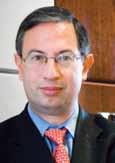
HERCULES is first exposome
Gary Miller aims for Rollins to be a giant in exposome research with HERCULES (Health and Exposome Research Center: Understanding Lifetime Exposures), funded by the first exposome-based center grant awarded in the United States.
The $4 million grant comes from the National Institute of Environmental Health Sciences. Two other exposome research centers are in London and Barcelona.

“HERCULES is more than an acronym,” says Miller, director of the center. “Sequencing of the human genome project was a Herculean task, and determining the impact of the complex exposures we face throughout our lives represents a similarly difficult challenge. The exposome itself
and communities with limited resources.
Mohammed Ali, assistant professor of global health, is the recipient of the 2013 Association of Schools and Programs of Public Health/Pfizer Early Career in Public Health Teaching Award, which recognizes young faculty for teaching excellence. Ali specializes in the study of diabetes, including youth-onset diabetes in Chennai, India, and diabetes care in South Asia. He also provides surveillance advice to diabetes programs and works with the CDC’s National Diabetes Prevention Program.
Previous winners of the Early Career in Public Health Teaching Award from Rollins include Juan Leon, assistant professor of global health, in 2012, and Rob Stephenson, associate professor of global health and the first recipient of the award in 2007
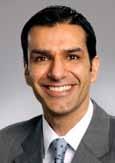
center in the U.S.
represents all of the external forces that act upon us. We know that measuring the exposome will be extremely difficult but very worthwhile.”
The exposome is a relatively new concept that incorporates all of the exposures encountered by humans. It is proposed to be the environmental equivalent of the human genome and includes lifetime exposures to environmental pollutants in food and water, physical activity, medications, homes, and daily stressors. Exposome research looks holistically at the human body’s exposures, how the body responds to those exposures, and their combined effects. Initially, the HERCULES center
includes 38 investigators from Emory and the Georgia Institute of Technology, where experts will aid in computational analysis and integration of large data sets. To learn more about HERCULES, visit humanexposomeproject.com.
In
6 public health magazine spring 2014
Brief
Mohammed Ali
Carlos del Rio
Gary Miller
Rollins Dean James Curran presented Thomas Lawley, who stepped down as dean of the medical school in 2012, with the Charles R. Hatcher Jr. M.D. Award for Excellence in Public Health. “Tom and I were deans together for a long time. The Rollins School of Public Health would not be as good as it is without Tom having been dean of the medical school,” Curran said. The schools have worked together to increase the number of students graduating with MD/MPH degrees to approximately 20 a year, Lawley said. The RSPH opened during Hatcher’s tenure as Emory vice president of health affairs.

Kindergarten weight a strong indicator of childhood obesity

More than 26% of children enter kindergarten overweight or obese, RSPH researchers have found. They also found overweight kindergartners were four times more likely than normal-weight children to become obese by the 8th grade.
Led by Solveig A. Cunningham, assistant professor in the Hubert Department of Global Health, the team analyzed data on children who participated in an Early Childhood Longitudinal Study of the U.S. Kindergarten Class of 1998-1999. With survey adjustments, the data sample represents all U.S. children enrolled in kindergarten during that time (approximately 3.8 million).
The team found more than 12% of children enter kindergarten obese and more than 14% are overweight. Children
who were large at birth and overweight by kindergarten were at the highest risk of becoming obese before age 14. “Although trends in the prevalence of obesity are well documented, there is surprisingly little known about new cases of childhood obesity,” explains Cunningham. “Examining incidence may provide insight into the nature of the epidemic, the critically vulnerable ages, and the groups who are at greater risk for obesity.”
The study garnered much media attention, including by The New York Times, National Public Radio, and the Associated Press.
Michael Kramer, assistant professor of epidemiology, and Venkat Narayan, Hubert Professor of global health, collaborated with Cunningham on the study.
In
7 spring 2014 public health magazine
Brief
Charles Hatcher, Thomas Lawley, and James Curran
A THIRST FOR safe water and sanitation

Thomas Clasen joins the Center for Global Safe Water and aims to change long-held assumptions about common solutions
by Kay Torrance
Years ago, while working as a merger and acquisition lawyer in Latin America, Thomas Clasen (above left) came across a novel water filtration that he thought was ripe for development into a point-of-use water treatment system housed inside a water bottle. “I was intrigued by the idea of point-of-use water treatment as a way of jumping over poor infrastructure in low-income countries, much like the mobile phone networks. I thought if I made this great product, people would buy it, essentially ‘build it and people will come,’” he says. “I learned all of my assumptions were wrong.”
The water bottle system proved too costly for use in developing countries, but he sold the rights to it, ditched his 20-year law career, and headed off to the London School of Hygiene and Tropical Medicine to earn his master’s and doctorate in waterborne diseases. He joined the faculty in 2004 and in August 2013 came to Rollins and its Center for Global Safe Water (CGSW) as the Rose Salamone
Gangarosa Chair of Sanitation and Safe Water.
Since his early days in London, he’s been a prolific researcher and writer. He’s published more than 70 articles—evaluating household filtration in more than a dozen countries, assessing the effects of India’s largest-ever sanitation campaign, and challenging the United Nations on its declaration that it had met its Millennium Development Goal of increasing safe drinking water when it did not use a sound metric to measure water quality. But what really irks him is the fact that more people around the world have cell phones than toilets, according to a United Nations study, and that the poorest 40% of people in southern Asia have barely benefited from improvements in sanitation.
“This is not about spending decades testing a vaccine,” he says. “We know how to build latrines that safely contain feces and how to remove pathogens from drinking water. The challenge here is getting those solutions to the most vulnerable. The investment in water and sanitation overseas or by develop-
ing countries themselves in rural areas or urban slums has been flat or falling.
“So much of my work could seem frustrating since I often find there is no evidence of impact, even from interventions that are being widely promoted. I’d like to find interventions that work, but I take most of my satisfaction in designing and running a rigorous evaluation that says whether or not it’s effective.”
The opportunity to catalyze research opportunities through the endowed Gangarosa chair is the main reason why Clasen chose the RSPH . “Rollins is one of the few schools of public health that has made a genuine commitment in the area of water and sanitation,” he says. “It has strong microbiologists and epidemiologists—I know them, and I know their work. Atlanta is pretty much ground zero for this area of work with CARE , the CDC , the Carter Center, and Rollins all here.”
For the past few years, Clasen’s ground zero has been Odisha, India (formerly known as Orissa). His
public health magazine spring 2014 8
Gates Foundation-funded studies are looking at how India’s sanitation campaign is playing out in this northeastern coastal state of 42 million. One piece of research so far has yielded some interesting results that may change some long-held beliefs in the field.
Clasen has shown that giving water disinfectant tablets to households with children under age 5 provided them with no protection against diarrhea. This result may have finally settled the debate over the intervention; previous studies were split on the issue. Clasen’s study had a larger sample size and a longer follow-up period, and it included both urban and rural areas.
Odisha also has not seen a positive impact on effective disposal of child feces, considered a significant source of exposure to fecal pathogens. In the 20 villages Clasen and his colleagues studied, the sanitation campaign had been running for at least three years, and most households had a latrine. But neither were children under the age of 5 using the latrine nor were their parents properly dispos -
ing of feces in it.
The Indian government built many latrines around the country but did not ensure their functionality or use advertising to break the long-held norm of open defecation.
“They built a lot of latrines, but the campaign lacks incentives to ensure or even encourage latrine use,” Clasen says. “We not only have to come up with effective solutions, but we have to change the norm, and I don’t know where the tipping point is where people will think I have to use a latrine to defecate. And a change in behavior may lead to health gains.
“By contrast, open defecation is not the norm in Africa,” he adds.
“The question is whether or not there is improved sanitation. Latrine pits in Africa are deep so that they can be used longer. They have a lower population density so rural dwellers can dig new pits when the old ones fill up. In India they have to empty pits; there is no room for new pits. I think the challenges in Africa are more manageable.”
In Africa, the task is to update its water supply system. Through

his studies in Zambia, Congo, and Rwanda, Clasen has shown that household filters can work. People will use them, and they can store water and keep it free from contamination. But as positive as those studies were, Clasen doesn’t believe the water and sanitation community should ignore what he sees as the end goal—a safe and uninterrupted water supply.
“I think point-of-use filtration has a role,” he says. “For people who are not going to be reached by a regulated, piped-in water system anytime soon, household filters give people a way to address deficiencies in water quality. In some countries the water suppliers are so focused on improving access that they’ve abandoned their role in improving quality. So point-of-use filtration has a role, but it shouldn’t displace the real goal, which is a safe, continuous, regulated supply of water delivered to household taps. Ensuring optimal outcomes requires not only water quality but water quantity.”
spring 2014 public health magazine 9
Mental health takes its place at Rollins
A new center raises the profile of research and education to aid a vulnerable segment of the U.S. population

10 public health magazine
2014
spring
When Benjamin Druss was a medical student more than 20 years ago, he set his sights on a career as a primary care researcher. He signed on for a residency in primary care—what better way to know the trials and tribulations of the field than to work as a primary care doctor, he thought. But in his first year as a medical resident, when he realized how much of work in primary care was related to psychiatric and psychosocial issues, he decided to add a psychiatry residency as well.
In the years since then, he and his team of researchers have studied the many issues—such as stigma, insurance regulations, and the lack of providers—that make mental health care so challenging in the United States. These issues still persist, but recent changes have led Druss to proclaim that there is no better time than now to advance the nation’s mental health and research into it.

The 2008 Mental Health Parity and Addiction Equity Act ended insurance discrimination by mandating equal coverage for treatment for mental health or substance use disorders. And now more people will have access to private or public insurance through the Affordable Care Act (ACA) and expansion of Medicaid (in some states). Those two laws have helped pave the way for the new Center for Behavioral Health Policy Studies (CBPS). The center, housed at the RSPH, brings together funded researchers focused on mental health.

11 spring 2014 public health magazine
Benajmin Druss expects more public health schools to embrace mental health research in the coming years.
“Schools of public health originally focused on an infectious disease paradigm, but there is increased recognition about the growing burden of chronic illness in the United States, and within chronic illness, mental health disorders in particular,” Druss says. “There are many people involved in developing better treatments, but we also need to look at the population as a whole—how do we make sure people have access to care and that they stay in care. We’re almost certainly going to see a growing mental health focus in public health schools in the coming years.”
Currently, the RSPH is one of a few schools in the United States with an emphasis on mental health research. Druss himself is one of a handful of psychiatrists based at a school of public health.
“We would like to see a world with better care and better health for people with mental and substance use illnesses,” he says. “Toward that end, the center reflects our goals in research, teaching, and service. We want to foster highquality work that informs policy
and is useful to policymakers. On the teaching side, we are very much devoted to training the next generation of researchers, public health practitioners, and advocates.”
The RSPH began a “Mental Health Concentration” in 2006 after students began expressing interest in organizing their electives, theses, and practicums around mental health. The interest in the concentration proved so successful that the RSPH started a certificate program in fall 2010. Each year, approximately 25 students enroll in the certificate program, and 58 have earned one thus far. Graduates have taken positions with state mental health authorities, advocacy groups in Washington, community mental health centers, and federal agencies. The CBPS is conducting a survey to track career choices of graduates who have earned the mental health certificate.
A group of like-minded students recently founded the Emory Mental Health Initiative (EMHI) to foster interest in mental health-related issues and careers. Says Meredith Craven 14MPH, “I joined the group to learn more about what it means to concentrate on mental health in the public health field.”
Craven, who is working toward the mental health certificate and plans to get a doctorate in clinical psychology, says that in addition to education and community work, the EMHI provides career development for students. “Many of us had an interest in the mental health field, but we weren’t sure what we could do with it,” she says. “But in public health, everyone’s path is
different. Public health is constantly changing so you can create your own job.”
Bridging the gap
On the research front, the CBPS is helping foster greater collaborations, which, in turn, will bring more attention to mental health issues, says Janet Cummings, assistant professor of health policy and management and a member of the center. “Ultimately, I think one of the biggest advantages to the center is the opportunity to increase the visibility of our work, and with increased visibility comes opportunity for new collaborations.”

Research by the center’s faculty is key to bringing attention to and fixing the gaps in the U.S. mental health care system, she says. Cummings herself has been instrumental in showing there are large gaps in geographic access to mental health clinics that are often the only source of care available to people who are uninsured or have public insurance. (Nearly half of all children in the United States are covered by public insurance programs such as Medicaid or do not have any insurance, she points out.)
“It’s really frustrating after a tragic event (such as the shooting at Sandy Hook Elementary School in 2012) that people talk about children’s mental health, but they do not know how big the gaps in the system are,” she says. “We need psychiatric beds for children who are a danger to others or themselves, but beyond that you need the providers in the community for ongoing treatment. I see the ACA as an opportunity to take steps in the right direction, but there are a lot of structural barriers that have to be addressed. Expanding insurance coverage is an important step in
12 public health magazine spring 2014
Most people are surprised to find out just how big the system gaps are in children’s mental health care, says Janet Cummings.
the right direction, but if a provider isn’t available, then having better insurance coverage will not improve access to care.”
Cummings and other center faculty see their research as an important tool to document gaps, which they then hope will lead to calls for action. Druss and Silke von Esenwein, for example, are studying an integrated health care model to improve primary care for mental health patients. The three experts often work closely with center faculty members Jason Hockenberry, a health economist, and Kimberly Rask, an internist and health economist who directs the Emory Center on Health Outcomes and Quality.
“The longer I do research, the more I feel that our mental health system is becoming two-tiered,” Cummings says. “If parents have resources, then there is a lot of available help for their children. But uninsured kids, those with public insurance, and even many in the middle class, are being relegated to the bottom tier.”
Cummings believes her future research, and that of other mental health services investigators, will need to inform strategies to close the two-tiered mental health treatment system that exists today.
The Carter Center as partner Partnering with others in the field
is vital to such endeavors. “Other schools may have centers, but one thing that is unique about our center is our ongoing relationship with the Carter Center Mental Health Program and our affiliations with the CDC ,” Cummings says. “I think that is reflective of Ben’s hard work over time to develop meaningful collaborations.”
Druss is a member of the Mental Health Journalism Fellowship Advisory Board and Mental Health Task Force at the Carter Center, where he advises on new programming and an annual symposium, which features topics of concern to mental health practitioners, advocates, and researchers. He is also Rollins’ Rosalynn Carter Chair in Mental Health, the first such endowed chair at a school of public health. The chair is reflective of the bridge between the RSPH and the Carter Center—the academic research base at the school and the Carter Center’s action-oriented agenda.
“The key element of the relationship between the Carter Center and Rollins is that we work in the same space but in different ways,” says Thomas Bornemann, director of the Carter Center’s Mental
Health Program. “We are not a research unit, but we’re a voracious consumer of research. We’re the real-world setting that Rollins can use to take its research to the community. It’s really a relationship where both parties benefit.”

13 spring 2014 public health magazine
“We are not a research unit, but we’re a voracious consumer of research. We’re the real-world setting that Rollins can use to take its research to the community. It’s really a relationship where both parties benefit.”—Thomas Bornemann, director of the Carter Center’s Mental Health Program, shown with Rosalynn Carter
Improving mental health in Liberia

A Carter Center program turns lives around for those with mental disorders
“My officers believe they can beat the craziness out of a person,” the police officer whispered to Janice Cooper, as they stood recently in a classroom in Liberia. They were discussing how the police should treat the mentally ill that they encounter. She reassured him that the training the officers would undergo would change that misguided belief.
Cooper frequently hears such comments from Liberians. In a country still trying to overcome the ravages of two civil wars and persistent poverty, Liberians have paid little attention to the issue of mental health. Currently, the country of 3.8 million people has only one psychiatrist and one mental health hospital. More than one-third of the population suffers from depression. Myths, such as “beating the craziness” out of a person or curing someone through faith healing, have been passed down from generation to generation. As a result, Liberians with mental health disorders are left untreated, chained to logs, or locked inside a room and frequently are abused. Cooper, a Liberia native and adjunct faculty member at Rollins, is leading an effort through the Carter Center to change attitudes and improve access to mental health services in her homeland.
In the past four years, the center’s Mental Health Program in Liberia has trained nurses and physician assistants (PAs) to recognize and treat mental disorders. Because the need for mental health services is so great, the country cannot wait for doctors to graduate from medical school.
“We recognize that we’ll never have enough psychiatrists to meet the needs of the mentally ill,” Cooper says.
Cooper worked with Gail Stuart, dean of the College of Nursing of the Medical University of South Carolina and
an expert on psychiatric nursing, to develop a curriculum, which they in turn taught to Liberian nursing faculty. More than 100 health care professionals have been trained so far, and Cooper expects to exceed the program’s goal of 150 by the time the program ends in August 2015.
Nurses and PAs also train in various clinical sites, including prisons and a children’s clinic. Now eight of 15 counties have a clinical practice in a prison, all started by program graduates.
The initiative has moved beyond training health care professionals to help ensure a better working environment for them. Program staff helped Liberia expand their drug importation list to more than 20 to treat mental illness; previously Valium was the only drug on that list and often the only one available.
To ensure that people with mental illness are treated fairly, Cooper and her colleagues train police officers, journalists, pharmacists, and religious leaders on the various types of mental disorders, their causes, and treatment. Training sessions include a guest speaker who has a mental disorder. As Cooper has learned, these personal stories are much more effective in reducing stigma than public service announcements on billboards or radio.
“It’s important for them to see a person fully functioning,” says Cooper. “I’ve seen both police officers and journalists change their opinion as they listen to a story.”
As training continues, the Carter Center is exploring replicating the program in Sierra Leone. Cooper also has collaborated with Benjamin Druss, the Rosalynn Carter Chair in Mental Health at Rollins, to evaluate the program.
“To touch people with mental illness and students so dedicated to their craft every day is amazing, just amazing,” she says.
—Kay Torrance
14 public health magazine spring 2014
Janice Cooper leads a Carter Center program to train nurses and physician assistants to diagnose and treat mental disorders.
Defining the link between primary and mental health care

Researchers have known since the late 1980s that people with a serious mental health disorder are generally sicker and die younger than those without such a disorder. The weak link between mental health care and primary or specialist care is one that Druss and von Esenwein have sought to better define.
They conducted a study in 2011 that looked at people with mental health disorders over a 17-year period. They found that people with mental disorders died an average of 8.2 years younger than the rest of the population. The average age of death was 66 years, compared with 74 years of age in the general population. Nearly all of the excess mortality was due to medical rather
than mental health causes.
“In my work as a psychiatric resident at Yale, I saw how many of my patients’ problems went beyond clinical issues, such as being on the right medication, and were in fact larger systems issues with getting access to decent care, particularly to primary medical care,” says Druss. “At Emory, our work has increasingly expanded from a health services framework to a broader public health approach. This method looks at people with serious mental illnesses as a disadvantaged population for whom we must address formal health needs, health behaviors, and social and environmental issues if we are going to improve their health and longevity.”
One idea that is gaining much attention nationally and from Druss and von Esenwein is that of an integrated health model, one that provides primary and mental health care in a coordinated fashion. When mental health care is integrated with primary care, often at the same location, mental health patients have greater access to primary and preventive care, and their health status significantly improves. For patients with a serious mental disorder, mental health clinics are
often their first and only points of contact with the health care system. Moreover, when people with mental illness feel understood and trusted by their mental health provider, they tend to be more engaged with the health care system.
Von Esenwein is now focusing on evaluating integrated systems. She cautions that “integration” does not simply mean locating mental health and primary care in the same building.
“Patients should not have the sense that this hallway is for mental health appointments and this other hallway is for physical care; it should be a team practice,” she says. “And if a practice is not sharing medical records, it’s not integrated.
“Access to care is a long-term problem. There is a big research-topractice lag in mental health care, even with other areas of physical medical care, such as cardiology. I think the population that we are working with is a difficult one, and the mental health system has a lot of catching up to do.”
The ACA is pushing the movement for integrated services, von Esenwein says.
“It’s a very exciting time in the mental health field,” she says. “It’s interesting to see it happen so fast. Mental health is getting a big boost from the Affordable Care Act, but we will have to see how it plays out.“
Regardless of how the ACA unfolds, “the biggest sea change is that the system is transforming itself from focusing on individual patients to one that looks at how best to manage populations,” says Druss. “We need to make sure that mental health has a central role in this new system. It needs to be front and center.”
15 spring 2014 public health magazine
Health economists Jason Hockenberry and Kimberly Rask, who is also an internist, help frame the CBPS’s studies.
Melody’s story
A Rollins alumna writes candidly about her bipolor disorder
by Pam Auchmutey
The Dairy Queen in Canada, just over the border from Glacier National Park in Montana, has special significance for Melody Moezzi 06L/06MPH. She visited there several times a week while working at the park during summer break from college in 1999. Each time, she ordered a large chocolate M&M Blizzard but ate just a few bites.
“You’d think after the 10th Blizzard or so, I’d start ordering small, but no. I had to have more than I could eat,” writes Moezzi in her book Haldol and Hyacinths: A Bipolar Life, published in 2013. “That’s what mania is all about. Too much. Of everything.”
Throughout that summer, Moezzi enjoyed the park’s beautiful scenery, helped customers in the lodge gift shop where she worked, made several new friends, and deepened her spirituality as an Iranian-American by learning to pray properly as a Muslim. Her friends often teased her to slow down—her mind, speech, and movements raced along in high gear. And she stopped sleeping. Though Moezzi didn’t realize it then, her Montana summer marked her formal entry into the world of clinical bipolarity at age 20.

Nearly a decade would pass before she would receive a proper diagnosis and learn how to manage her disorder. Until then, Moezzi cycled through depression, mania, hallucinations, psychosis, an attempted suicide, medications, psychiatric therapy, and the stigma often associated with mental illness.
Now 34, Moezzi is an attorney, writer, and activist on mental health, disability rights, Islam, Iran, and women’s rights. Her first book, War on Error: Real Stories of American Muslims (2007), garnered a Georgia Author of the Year Award and a Gustavus Myers Center for Bigotry and Human Rights Honorable
Mention. Moezzi and her sister, Romana, grew up in Ohio under the loving care of physician parents from Iran. She now lives in Raleigh, North Carolina, with her husband, Matthew. Moezzi credits her family with helping her come to terms with her bipolar disorder, which she discusses in the following Q&A.
Q: Why did you write Haldol and Hyacinths?

A. I’m an Iranian-American Muslim woman, and after 9/11, I realized I had entered this new minority. I realized there was much more stigma, fear, and silence than I had known before. The same is true for people with mental illness. They are part of a minority surrounded by a lot of stigma. To keep quiet about it wasn’t my style. The book is a way to draw attention to an issue that’s important to me.
Q.What is the significance behind your book’s title?
A. Haldol was the first antipsychotic I was ever administered. I was injected with it at the emergency room at DeKalb Medical Center, and it helped bring me back from acute mania and psychosis. Hyacinths are part of the traditional spread (or haft-seen) for the Persian New Year, which falls on the first day of spring. They represent rebirth.
16 public health magazine spring 2014
Q.When did you first realize you suffered from bipolar disorder?
A. I had my first bout of depression in high school. I had my first full-blown hallucination when I was in college. One night, a day-glow spider whispered to me while spinning a web made out of grape bubble gum. It wasn’t a dream. I was wide-awake.
Q.During your last semester at Emory, you tried to commit suicide. What led to that?
A. At that time, I was being treated for unipolar depression, and because of my misdiagnosis, I was prescribed medications that actually made my symptoms worse.

Q.What happened next?
A. I spent nearly two weeks in a psychiatric hospital. I left without an accurate diagnosis or a proper treatment plan. Nobody at school knew where I’d been. I was so ashamed about it—to the point that when I heard about a rumor that I’d been in jail, I was relieved. I figured that was less stigmatizing than the truth.
Q.How did your symptoms and treatment progress?
A. Between periods of “normalcy,” whatever that is, I continued to experience deeper depressions and worsening symptoms of mania.

To raise awareness about the conflict between the
United States and Iran, I hula-hooped for six hours straight at the 2008 Democratic National Convention. I was convinced that I could prevent war by hula-hooping.
After I returned home, I fell into a depression, which one night just lifted out of thin air. It’s called a “switch.” And suddenly I was acutely manic and eventually psychotic. I thought I landed a nonexistent job at the Travel Channel and had to move to Rome. I believed I had won the lottery and was dying, and eventually I believed I was a prophet and could fly. By November, I was in a psychiatric hospital in Atlanta and finally had a correct diagnosis of bipolar disorder, type 1
Q.Your family has stood by you throughout your illness. They made sure you received the care you needed. Is that usually the case for people who have a mental illness?
A. I have had a lot of advantages that others don’t always have. I put my family through a lot. Many others like me have much less support from family, and even if they have that support, treatment is ridiculously expensive, and not everyone has insurance.
Q.What is your treatment like now?
A. I take a mood stabilizer every day and an “emergency” antipsychotic a few times a year when my manic symptoms get bad. There is no cure for this.
Q: You’ve published two books. You’ve written and provided commentary for CNN, NPR, and The New York Times. You’re scheduled to speak about your illness and recovery in Atlanta in May. What else lies ahead for you?
A. I have no idea where I’ll be in the future, but in my experience, God has put me where I need to be when I need to be there. I trust in that.
For the longest time, I didn’t get it, but there is an advantage to having a brain that works differently. It means that you’re capable of things that others aren’t, but you’re also prone to difficulties that others don’t have. There is something valuable about the way my mind works. I would never want to “cure” that. It’s part of who I am.
Michael Windle’s research breaks long-held misbeliefs about drinking among the young.

Too much, too early Why teenage drinking may lead to problems later in life
by Pam Auchmutey
In a television interview early this year, ABC news anchor Elizabeth Vargas talked candidly about her recovery from alcoholism. Before seeking treatment last fall, Vargas drank as many as three to four glasses of wine a night to cope with the panic attacks that have plagued her since childhood, starting when her father went away to serve in Vietnam.
18 public health magazine spring 2014
How Vargas came to depend on alcohol later in life is a compelling question for Michael Windle, professor of behavioral sciences and health education at Rollins. Her childhood anxiety is a telltale sign.
Vargas fits the profile of the women and men whom Windle has studied throughout his career. As his research shows, alcohol abuse and dependence often are intertwined with other difficulties, such as anxiety and depression. In many cases, such emotion-based factors can be traced back to experiences from childhood and adolescence.
In a 23-year study known as “Lives Across Time: A Prospective Study of Adolescent and Adult Development” (LAT), Windle followed more than 1,200 people from adolescence through young adulthood to examine stability and changes in drinking behaviors and mental health. The study began in 1988, when the participants were 15. At the last data collection, they were 38.
Windle undertook the study as a young developmental psychologist at the University at Buffalo Research Institute on Addictions, with funding from the National Institute on Alcohol Abuse and Alcoholism (NIAAA).
For the initial two years, Windle surveyed teens every six months to look at changes in their behavior patterns, including alcohol use, and the factors that caused those changes.
Why did some teens drink heavily and use drugs throughout high school, while others experimented briefly or not at all? What factors put them at risk or protected them? And were there differences for boys and girls?
For the initial two years of the award, Windle and his research team surveyed teens every six months to look at changes in their behavior patterns, including alcohol use, and the factors that caused those changes. Why did some teens drink heavily and use drugs throughout high school, while others experimented briefly or not at all? What factors put them at risk or protected them? And were there differences for boys and girls?
“A lot of adolescents experiment with alcohol and drugs,” says Windle, who chaired Rollins’ Department of Behavioral Sciences and Health Education for six
years. “Some of them will use these substances long term, and others will stop. The larger question is how do we change those patterns over time, knowing that not everyone changes in the same way or at the same time?”
Windle expected his study would last no more than three or four years. But as he delved deeper into why teenagers drink, he began to wonder how those in his study would fare as adults. That led to subsequent grants from NIAAA to follow the teens and their parents for 18 more years. In a sense, the study participants became an extended family for Windle and his wife and longtime collaborator, Rebecca.
“We got caught up in it,” she says of the initial study phase. “NIAAA strongly recommended that we follow the adolescents into young adulthood and include their parents. With that, the research evolved into a long-term family study.”
As the researchers followed the teenagers through young adulthood, key patterns emerged. For one, they discerned that alcohol use, abuse, and dependence were highest for men and women in their mid20s. After that, the trend declined. Windle’s findings, and those of other experts, have changed perceptions about alcohol abuse and dependence. NIAAA, in fact, now views alcohol disorders within a developmental framework rather than as a medical disease.
“When I started doing studies in this area, the national perception of an alcoholic was that of a 40-something blue-collar white male sleeping in the gutter,” says Windle. “My studies and others have shown that alcohol dependency is highest for men and women between ages 23 and 27. That makes a world of difference in terms of treatment and prevention—what you should be doing and when.”
19 spring 2014 public health magazine
Why teens drink
During adolescence, teens drink for a number of reasons. For boys, drinking alcohol is a way to bond with friends and peers. Girls may drink for similar reasons. More than boys, girl experience higher levels of anxiety and depression and may use alcohol to cope with emotional stressors such as family problems or a romantic breakup.
Both sexes also indulge in binge drinking, consuming five or more drinks of beer, wine, or spirits at a time, one or more times a month.
After high school, many boys and girls enter college, where they live away from home for the first time, free of parental supervision. The tendency to drink heavily spirals higher than before. But after college, the pattern of heavy drinking declines for most young men and women as they begin careers, marry, and become parents.
“Their energy gets redirected in a more constructive pattern,” says Windle. “They reconstruct their lifestyle where alcohol doesn’t play as central a role.”
Still, the damage from heavy drinking during adolescence and young adulthood can be serious and long term. Alcohol use, especially binge drinking, can adversely affect development of brain regions associated with learning, memory, and decision-making. From a public health perspective, heavy and binge drinking are of great concern. Both are associated with the three leading causes of adolescent mortality—automobile and other accidents, suicides, and homicides. In addition, alcohol use is associated with other health-comprising behaviors such as sexual assault and sexually transmitted diseases, including HIV, that affect physical and emotional health into young adulthood and beyond.
Children should be screened for alcohol earlier. Children in preschool already have concepts about who drinks and whether alcohol use is positive or negative. Children who drink heavily are at higher risk of heavy drinking as adults. The Windles’ study stands out for its assessment of multiple substance behaviors during adolescence and their influences on behavior disorders in adults.
recognize the extent to which children experiment with alcohol, tobacco, and other substances. Based on the 2012 National Survey on Drug Use, more than 4 million U.S. children from ages 12 to 17 reported consuming alcohol in the past 30 days.
“We need to screen for alcohol and other problems earlier,” he says. “Children in preschool already have concepts about who drinks and whether alcohol use is positive or negative.”
As previous studies by experts also have shown, children who drink heavily are at higher risk of heavy drinking as adults. But do other types of early-onset behaviors contribute to alcohol dependency in young adults?
To answer that question, the Windles looked at 671 LAT participants to map which of 10 early-onset behaviors (at age 15) contribute to four specific behaviors in young adults (at age 23 and again at age 28). The 10 early risk factors include alcohol, tobacco, marijuana, and cocaine use; police contact; property damage; stealing; fist fighting; truancy from school; and running away from home.
“We looked across several earlyonset behaviors as predictors of alcohol, tobacco, marijuana, and cocaine use during adulthood,” Michael Windle explains. “Does the fact that someone who smoked or got into trouble with police as a teenager predict whether they drink as an adult? Is there anything specific about the behaviors in adulthood that reflect what we see early in adolescence?”
For years, Windle notes, health experts did not
The Windles’ study stands out for its assessment of multiple substance behaviors during adolescence and their influences on multiple behavior disorders in adults. As the results of their study showed, more than 80% of adults with alcohol disorders, more than 60% with cannabis disorders, and more than 30% with co-
20 public health magazine spring 2014
caine disorders exhibited six or more problem behaviors as children. Additionally, 45% of adult tobacco users had five or more early problem behaviors prior to age 15.

Screening for multiple factors
Ultimately, such results could help school and health professionals conduct better and earlier screening of children exhibiting multiple risky behaviors. Screening results then could be used to tailor interventions specific to each child’s needs. They also can lead to better understanding of the factors that make children resilient—children who don’t engage in risky behaviors at all and those who do and yet grow up to lead healthy, positive lives.
To identify those at risk, Windle and a group of experts created a guide that clinicians and educators can use to screen children for alcohol use. Developed by the NIAAA Task Force for Underage Drinking, the practitioner’s guide—“Alcohol Screening and Brief Intervention for Youth”—is available for free at niaaa. nih.gov/youthguide. The task force is evaluating the guide, now in use throughout the United States, to measure its effectiveness. The guide is one way of increasing opportunities for the safe passage of children from adolescence to young adulthood and beyond.
Though “Lives Across Time” is not collecting new data for now, the data it provided over 23 years
continues to yield new clues on alcohol use across the lifespan. Windle has begun a new series of studies, supported by an NIH Research Scientist Award (K05). He is the first investigator at Rollins and one of five at Emory to receive a K05, awarded to researchers for contributions to their field of study. The $1.03 million award is allowing him to pursue new questions regarding the genetic, social, and environmental factors that contribute to alcohol use and dependency across the lifespan.
Windle’s K05 also provides funding to mentor young faculty members like Carla Berg, a Rollins expert on smoking prevention and cessation. Windle serves as a co-investigator on Berg’s new NIH-funded study on the use of traditional and alternative tobacco products among 2,500 students at community colleges and universities in Georgia. The study will help inform the Food and Drug Administration on the habits of students who use electronic cigarettes, hookahs, and small cigars versus cigarettes.
Berg’s study also perpetuates the purpose of “Lives Across Time” as Windle envisioned a quarter century ago—to prevent the substance disorders that plague Elizabeth Vargas and so many others.
Ultimately, notes Rebecca Windle, “Our findings from the LAT study will help children and young adults avoid harmful behaviors that can affect them for the rest of their lives.”
For years, Windle notes, health experts did not recognize the extent to which children experiment with alcohol, tobacco, and other substances. More than 4 million American children aged 12 to 17 consume alcohol each month, according to the 2012 National Survey on Drug Use.
Through her research, Anne Spaulding (right) found that the HIV infection rate among inmates in the United States is more than three times higher than among the general public. Her new program, funded by the Elton John AIDS Foundation (left), links diagnosed inmates with care before they leave the correctional system.
Linking inmates to care
It was an opportunity that HIV researcher Anne Spaulding couldn’t pass up. Her friend had secured an invitation for her and a group of pals to meet Elton John and view his expansive photography collection at his Atlanta penthouse. Spaulding had recently been looking for funding for her HIV testing program, and her friend thought John might be a viable funding source.

The day proved fruitful for Spaulding. John talked with her about the HIV/AIDS infection rate among orphans in developing countries, and in return, Spaulding mentioned her work to test county inmate volunteers for HIV. She also said that she was looking for funding to expand the program. John listened and referred her to his AIDS foundation. She took his advice and recently was awarded $50,000.
“I found John personable, approachable, and passionate,” says Spaulding. “I’m excited by the opportunity to have the attention of his foundation and support from someone who is an advocate for the needs of the community and for those at the margins of society.”
Spaulding’s program provides voluntary HIV testing for new detainees at the Fulton County Jail. The program tracks new cases and whether inmates stay in care after they are released from jail. From January 2011 to March 2012, 52 new cases of HIV were found, and 80 were found in 2013. “I don’t believe that there is a higher percentage of people coming into jail with HIV,” Spaulding says of the uptick in new diagnoses. “More people are more comfortable with testing. In fact, inmates are asking for it.”
to care seems aggravated by the incarceration system—job loss, substance abuse, domestic violence,” Spaulding says. “Reintegration into the community is challenging. Visits with their probation officer need to be a priority. Getting HIV care might fall off their list of priorities.”
A correction system should be a porous system, where a wall is not a barrier to continuing care.
–Anne Spaulding, epidemiologist

She is seeking to expand her work through a new “Link to Care” program for previously and newly diagnosed inmates. Case managers would work with inmates and connect them to community HIV/AIDS treatment centers upon their release. Afterward, case managers would help them achieve the personal goals they set for themselves, such as employment, housing, or reuniting with their families.
“Everything that could be a barrier
Spaulding would like to see jails and prisons in Atlanta and elsewhere adopt a model that offers these types of wraparound services for inmates. “When I worked as the medical director of the correction system in Rhode Island, this was the model that we used. The same person worked with an inmate on the inside and outside. It was a porous system, where a wall was not a barrier to continuing care,” she explains. “I am hoping that we will change the way HIV prevention is done in this city and that rapid HIV testing in jails currently financed grant by grant will become a priority for funding by public health agencies.”
public health magazine spring 2014 22 Philanthropy
Making a community doctor
Joseph Burton is honored with a scholarship for MD/MPH students
When Ann Kirkley 69Ox 71C was a child in the small town of Homestead, Fla., an empty chair at the dinner table was not out of the ordinary. Her father, one of the town’s few doctors, typically rushed home from a house call. He always made it home in time for dinner, though sometimes a little late, to hear about his family’s day.
Joseph Burton 38C 40M was every kind of doctor to his patients— an internist, a general surgeon, an obstetrician—and therefore had little free time. “I can remember one time we had packed the car to go on vacation, and he got a call that his patient was in labor,” Kirkley says. “We got out of the car, left it packed, and went inside and waited until he got back.”
Kirkley usually went on after-dinner house calls with him. Through the years, she would see him treat three generations of a family. Burton continued working until his death in 1988. He was the definition of a community doctor, Kirkley says. So that others can follow in his path, she has made a planned gift to endow a scholarship for MD/MPH

students at Emory. The scholarship will be named for her father.
His daughter hopes the scholarship will help medical students who see themselves as part of the community, not merely as professionals who offer a service within the community.
“In the best of all possible worlds, the scholarship will help someone who is going to medical school to truly help people—people who can’t necessarily help themselves,” she says.
“Obviously, it will be someone with compassion who wants to give people access to a broad spectrum of health care. I included public health in the endowment because my dad truly knew his patients and their needs. I know that public health covers a greater range of care than his practice, but those who focus on community health will be helping local patients, like my father.”
Burton worked long hours but would not have had it otherwise. He was both a doctor and a friend
to most of his patients. “He listened to his patients on all accounts, and he had a talent for putting people at ease,” Kirkley says. “He never met a stranger. He put himself through medical school through a series of part-time jobs. I think my dad would be pleased that through all of his hard work, he could help someone else with the deep desire to help others. There was nothing else he would rather have done.”
Open to students from Emory School of Medicine and other U.S. medical schools, the MD/MPH program prepares students to serve as physicians who can address and prevent the health problems of individuals and communities. The five-year program includes one year of study at Rollins. To learn more about how to support this program, contact Kathryn Graves, associate dean for development and external relations, at 404-727-3352 or kgraves@emory.edu.
spring 2014 public health magazine 23 Philanthropy
Joseph Burton 38C 40M and his daughter Ann
Double measure
An anonymous donor is honoring two longtime faculty members in the Hubert Department of Global Health with separate gifts.

A $25,000 matching gift established the Deborah A. McFarland Global Field Experience Fund in recognition of McFarland’s lifelong commitment to global health education. The gift resulted from a challenge made last September, when the donor pledged a matching gift of $10,000 to create the fund.
An associate professor and health economist, McFarland directs the Global Field Experience program, which enables 70 students to conduct research around the world each year.
Two longtime and popular faculty members of the Hubert Department of Global Health are honored with gifts in their name
Faculty, staff, students, and alumni quickly met the goal. The donor then pledged to match the amount of gifts raised by the end of December. That led to matching more than $25,000 in gifts and provided a total of more than $50,000 to endow the McFarland Fund.
The donor behind the McFarland Fund also is honoring another colleague, global health professor Stanley Foster 82 MPH , with a gift to launch the Stanley O. Foster: Pathways in Global Health lecture fund.
A popular teacher at Rollins, Foster is a former CDC epidemiologist who played a historic role in eradicating smallpox from the world in 1980 . In 1994 , Foster left the CDC to join Rollins, where he has shared three decades of field experiences with his “learners”—his preferred name for students.

public health magazine spring 2014 24 Philanthropy
Stanley Foster
Deborah McFarland
1980s
ANNA SMITH 82N 85 MPH was awarded a master’s of science in traditional Oriental medicine in December 2013.
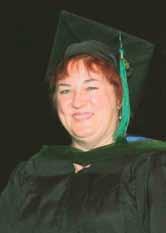
1990s
Health Association. She is director of academic affairs for Emory’s Department of Surgery.
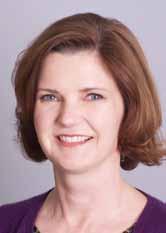
2000s
BORN: Eli Chaim to A l ICIA SAMU el S 01MPH and her husband, Eric Rosenstock, on June 2, 2013. Samuels is director of communication at the Johns Hopkins Bloomberg School of Public Health.

BORN: Nicholas Asher to BRI e ON ARTHUR BRANDON 98O x 00C 05MPH and her husband, Kenneth 09MBA, on Nov. 11, 2013.

from the American Society of Health-System Pharmacists’ Foundation.
JeNelle MelleRSON 07MPH has a new position as an epidemiologist in the maternal and child health section of the Georgia Department of Public Health.
AlexIS CleMeNTS JOHNSON 08MPH is the associate director of Wellness, Alcohol, and Violence Education and Services at George Mason University in Virginia.
M. M ICH elle Be RR ey 86Ox 88C 92 MPH is chief medical officer at Chimerix.
CHRISTOPHeR HOllIDAy 92MPH was named director of population health at the American Medical Association.

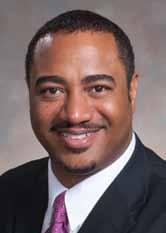
lISA CARlSON 93MPH was elected chair of the executive board of the American Public
C HAD v AND e NB e R g 96MPH is vice president of quality and performance improvement at Grady Memorial Hospital in Atlanta.
BORN: Mackenna Lee to ST eve N TROCKMAN 99MPH and Mary Kate Appicelli on June 13, 2013. Trockman was recently named a “Forty Under 40” winner by the Portland Press Herald . He is the director of community relations and outreach at Mid Coast Health Services in Brunswick, Maine.
BORN: Isaac to MARy ANN HAll 06MPH and her husband, Spencer, on Jan. 28, 2013.
MARRIeD: PAUlA MARTIN 99Ox 01C 06MPH to John Woodward on Nov. 23, 2013.
KHADIJA TURAy 06MPH received a doctorate from the University of North Carolina and works for Voxiva, which runs the text4baby program.
MARIe CHISHOlM-BURNS 07MPH received the 2013 Literature Award for Sustained Contributions
JOHN HUSTeDT 09MPH was named senior technical officer for the Malaria Consortium in Cambodia.
MARRIeD: vICTORIA McCAllUM 09MPH and JAReD FISHeR 09MPH on Oct. 9, 2011, in Austin, Texas. She is a technical writer at the National Cancer Institute in Bethesda, Md. Fisher is working on his doctorate in environmental epidemiology at the University of Maryland.
vICTOR WU 09M/09MPH was named a White House fellow. He was a primary care physician in Kingsport, Tenn.
spring 2014 public health magazine 25 Class Notes
Eli Chaim, born to Alicia Samuels 01MPH
Nicholas, born to Brieon Arthur Brandon 98OX 00C 05MPH
Anna Smith 82N 85MPH
Christopher Holliday 92MPH
Class Notes
SHAReFA ARIA 10MPH is the health informatics manager for the public health department in Tarrant County, Texas.
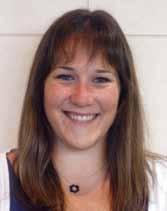
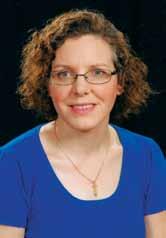
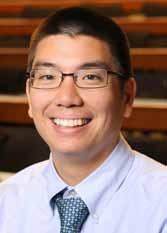
FReD gRANT Iv 11MPH is an administrative officer with Georgia State University’s School of Public Health.
NIKITA BOSTON 12MPH is a technical assistance liaison on a fetal alcohol spectrum disorders project at Northrop Grumman.
AlexANDRA geMMA 12MPH is a project developer for the national office of the Tourette Syndrome Association.
ReBeCCA RICe 12MPH is the lead author of the Georgia Civic Health Index, the firstever study of civic involvement in Georgia.
MARRIeD: gABRIellA vAN SCHOyCK 12MPH to Brian Lockhart on April 12, 2012. She is a writer and
Alumni Deaths
James cooper 57 c 62 m 87 mp H , of Marietta, Ga., on Nov. 21, 2013. He was 78.He practiced bariatric medicine. He is survived by his wife, Sharon, two daughters, and two granddaughters.
c Y n TH ia V inion 09 mp H , of Smyrna, Ga., on Dec. 20, 2013, of cancer. She was 46.She is survived by her parents, two sisters, three nieces, and one nephew.
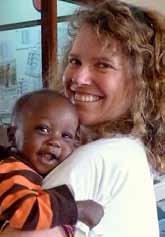
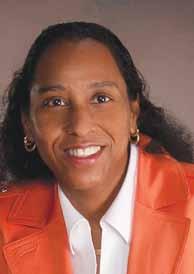

project manager at Freedman HealthCare in Boston.
KIRSTeN BONDAlAPATI 13MPH was selected to participate in Challenge Detroit, a yearlong program focused on attracting and retaining talent in Detroit to spur revitalization.
SAURABH CHAvAN 13MPH is a data analyst in the division of HIV/AIDS at the University of California at San Francisco medical school.
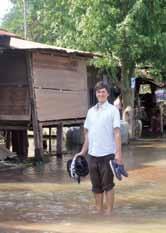
AMANDA gURIN 13MPH is a fellow at the National Cancer
Class notes continued on page 28
m ar Y Wiecz Y nski
Furni V all 97 mp H , of Nairobi, Kenya, on March 12, 2014, of cancer. She was 45. After graduating from Rollins, she joined Population Services International to improve health care in Bolivia, Central America, and Kenya. She most recently worked for the USAID in Kenya and other African countries on the issue of HIV/AIDS. She is survived by her husband, David, a son, her parents, and three brothers.
26 public health magazine spring 2014
Isaac, born to Mary Ann Hall 06MPH
Victor Wu 09M/09MPH
Marie Chisholm-Burns 07MPHJohn Hustedt 09MPH
Cynthia Vinion 09MPH
Mary Wieczynski Furnivall 97MPH
RSPH Alumni Association awards
D Av ID We STFA ll 09CMPH , the health director for Georgia District 2, received the RSPH 2013 Distinguished Achievement Award. Westfall oversees 13 county boards of health in north Georgia. Since graduating from Rollins, where he was a Georgia Health Foundation Scholar, he has advocated for coalitions among health departments, free clinics, and primary care providers to improve community health care access. For example, the Hall County Health Department and the Longstreet Clinic have started an obstetrics service for low-income pregnant women. He also secured a grant from the Healthcare Georgia Foundation to increase primary care services for HIV patients.
Westfall has made employee development a priority. He began a “public health 101” session at each county board of health meeting, during which he presents a short education segment on an aspect of public health. He also instituted an employee development program for district staff and an employee assistance program.
He is a board member of a number of public health organizations, such as the Edmondson-Telford Center for Children, the Foothills Area Health Education Center, the Regional EMS Advisory Council, and the Appalachian Nurse Practitioner Clinic. He teaches in Emory’s Executive MPH program and is the current chair of the Emory and Georgia Public Health Training Centers’ Joint Advisory Board.
RoByN KAy 03MPH, a clinical epidemiologist with the Baptist Medical Center in Jacksonville, Fla., was awarded RSPH’s Matthew lee Girvin Award, given to a recent alumnus who is making significant contributions to the public health field.


Kay previously served as a field epidemiologist with the Florida Department of Health, where she assisted staff in 20 counties, “continuously helping local staff solve problems and improve the quality of their work,” says Richard Hopkins, who was her supervisor and one of four people who nominated Kay for the award. “She developed a well-earned reputation for clear, direct, and tactful communication.”
Additionally, Kay routinely headed up epidemiological investigations of bacterial infection outbreaks across Florida. “Her strength on investigation teams has been as the person who takes the scientific plan...and makes it actually happen on the ground, without losing any of its rigor,” Hopkins says. She also doesn’t hesitate to share her knowledge with her colleagues. “Ms. Kay possesses a wealth of epidemiologic knowledge and has the gift of knowing how to share this expertise in a way that constantly challenged me to figure out the solution myself,” says a former employee of Kay’s. “She is able to help build a framework of learning but always allowed me to take the final step myself, ensuring that I owned the knowledge and could apply it in the future.”
spring 2014 public health magazine 27 Class Notes
Class Notes
OODRUFF He A lTH S CI e NC e S Ce NT e R
The greater whole
ZeRTUCHe 07C 12M/12MPH received the first Junior Fellow Rising Star in Advocacy Award from the American Congress of Obstetricians and Gynecologists (ACOG). The award recognizes her work with the Georgia Maternal and Infant Health Research Group (GMIHRG), which she founded while earning her MPH at Rollins.
Through its initial research, GMIHRG found that 52% of the areas outside of metro Atlanta have overburdened obstetric providers or no providers at all. During the 2012 Georgia General Assembly, GMIHRG provided each legislator with
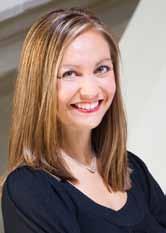
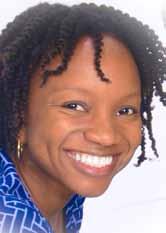

an “obstetric report card” to provide a snapshot of each district’s delivering physicians and birthing facilities. The lawmakers received the report cards prior to a vote on a bill that prohibited abortions after 20 weeks of gestation without exception and threatened to imprison providers for 10 years for failure to comply. GMIHRG encouraged lawmakers to consider the state’s existing provider shortage before voting on a bill that potentially could compel more physicians to abandon obstetric practice in Georgia. Although the bill passed and became law, the cards helped shape an amendment that made an exception for a medically unviable fetus.
Other public health students who worked with Zertuche are zoe Julian 14m/15mpH, elizabeth smulian 12c 14mpH, audra Williams 13m/13mpH, and abigail Yandell 13m/13mpH
In my position as CEO of the Woodruff Health Sciences Center (WHSC), I have a special perspective on the advances in public health that our students and faculty make every day. Rollins is a key component of WHSC, along with schools of medicine and nursing, a primate research center, Winship Cancer Institute, and Emory Healthcare. Together these entities integrate our missions of teaching, research, and practice—all with the end goal of bettering the health of the community.
As you know, Rollins plays an integral role in WHSC by looking at population health and is one of a few schools of public health in the United States with a team of researchers dedicated to mental health. Rollins’ new initiative, the Center for Behavioral Health Policy Studies, will help create a much needed fundamental infrastructure in a health care system that is just starting to integrate mental and physical health care. In turn, scientists and clinicians throughout the WHSC are using the findings of their Rollins colleagues in teaching and patient care. This integration is more important now than ever before as we enter a new era in health care.
I think the old saying, “The whole is greater than the sum of its parts,” exemplifies what WHSC does. Indeed having the benefit of all our disciplines working as one is really our only and best hope to realize the potential of this new era and to keep our commitment to society to make and keep people healthy.
S.Wright Caughman, md Executive Vice President for Health Affairs, Emory University CEO, Woodruff Health Sciences Center Chairman, Emory Healthcare
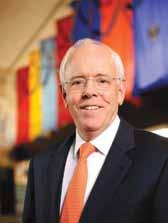
28 public health magazine spring 2014
W
Sharefa Aria 10MPH Nikita Boston 12MPH
Institute’s epidemiology and genomics research program.
ADRIeNNe DeMARAIS
Rollins School of Public Health
De AN ’ S COUNCI l
Ms. Anne Kaiser, Chair
Dr. Phyllis L. Abramson
Ms. Yetty L. Arp
Mr. Chris Barker
Ms. Paula Lawton Bevington
Ms. Connie Cousins-Baker
Mr. Bradley N. Currey Jr.
Ms. Sally A. Dean
Mr. René M. Diaz
Ms. Beth Desportes Dreelin
Dr. Walter C. Edwards
Ms. Pegi Follachio
Mr. Robert J. Freeman
Dr. Helene D. Gayle
Mr. Jonathan Golden
Ms. Leslie J. Graitcer
Mr. Shelby R. Grubbs
Ms. Virginia Bales Harris
Ms. Valerie Hartman-Levy
Mr. Richard N. Hubert
Mr. Phil Jacobs
Ms. Ellen Hale Jones
Ms. Randy Jones
Mr. Stanley S. Jones Jr.
Mr. Mark A. Kaiser
Ms. Ruth J. Katz
Mr. Alfred D. Kennedy
Dr. William Kenny
Ms. Ann Estes Klamon
Mr. Lawrence P. Klamon
Ms. Amy Rollins Kreisler
Ms. Mary Anne Lanier
Ms. Barbara W. Levy
Ms. Beverly B. Long
Ms. Melissa H. Lowe
Mr. Carlos Martel Jr.
Dr. Barbara L. Massoudi
Ms. Mary Lu Mitchell
Mr. John S. Mori
Mr. Horace Disston Nalle
Mr. Christopher Offen
Ms. Nancy McDonald Paris
Mr. Cecil M. Phillips
Mr. Glen A. Reed
Ms. Teresa Maria Rivero
Ms. Patricia B. Robinson
Ms. Donna C. Rohling
Dr. Nalini R. Saligram
Dr. Dirk Schroeder
Dr. John R. Seffrin
Mr. Lee M. Sessions Jr.
Ms. Debbie Shelton
Ms. Jane E. Shivers
Ms. Sandra L. Thurman
Mr. William J. Todd
Dr. Kathleen E. Toomey
Ms. Linda Torrence
Ms. Sarah L. Tripodi
Ms. Sheila L. Tschinkel
Ms. Evelyn G. Ullman
Dr. Walter B. Wildstein
Dr. Shelby R. Wilkes
Ms. Evonne H. Yancey
Dr. James W. Curran, James W. Curran Dean of Public Health
Ms. Kathryn H. Graves 93mph, Associate Dean for Development and External Relations
Undefined by bipolar disorder
Rollins alumna Melody Moezzi 06L/06MPH spent a decade cycling through depression and mania until she was correctly diagnosed with bipolar disorder. She talks about her life and her new book, Haldol and Hyacinths: A Bipolar Life, on page 16.

EMORY UNIVERSITY ALUMNI RECORDS OFFICE 1762 CLIFTON ROAD
ATLANTA, GA 30322
 This paper was manufactured using 50% postconsumer fiber, the highest percentage for domestically produced coated papers. The electricity used in the manufacturing of this paper is offset by clean, renewable wind power, and the manufacturing process was made carbon neutral through the purchase of verified emission reduction credits (VERs).
This paper was manufactured using 50% postconsumer fiber, the highest percentage for domestically produced coated papers. The electricity used in the manufacturing of this paper is offset by clean, renewable wind power, and the manufacturing process was made carbon neutral through the purchase of verified emission reduction credits (VERs).



























































 This paper was manufactured using 50% postconsumer fiber, the highest percentage for domestically produced coated papers. The electricity used in the manufacturing of this paper is offset by clean, renewable wind power, and the manufacturing process was made carbon neutral through the purchase of verified emission reduction credits (VERs).
This paper was manufactured using 50% postconsumer fiber, the highest percentage for domestically produced coated papers. The electricity used in the manufacturing of this paper is offset by clean, renewable wind power, and the manufacturing process was made carbon neutral through the purchase of verified emission reduction credits (VERs).
